-
Car Reviews
- All reviews
- Midsize SUVs
- Small cars
- Utes
- Small SUVs
- Large SUVs
- Large cars
- Sports SUVs
- Sports cars
- Vans
Latest reviews
- Car News
-
Car Comparisons
Latest comparisons
- Chasing Deals
Face-lifted, consolidated and much pricier on entry, the GV80 luxury SUV range repositions itself more upmarket while offering much less variety, despite the new Coupe flagship variant
Four years is a long time in GV80-Land. The Korean luxury large SUV launched in early 2020, tasked with re-establishing benchmarks for luxury, tech and refinement for its maker Genesis. And brought a fresh design spin, outside and in, that would quickly migrate across the brand’s new models and bring reimagined aesthetics to face-lifted oldies.
Its lineup brought breadth and diversity, lobbing down under with a smorgasbord of powertrains, configurations and options aimed at stealing away market share from established stalwarts in Audi Q7, BMW X5, Lexus RX and Mercedes-Benz GLE.
You could configure your GV80 to the hilt outlay permitting, though in its most basic form you could slip into the Genesis family hauler for $90,600 list…which, at the time, we called optimistic for the unproven newcomer.
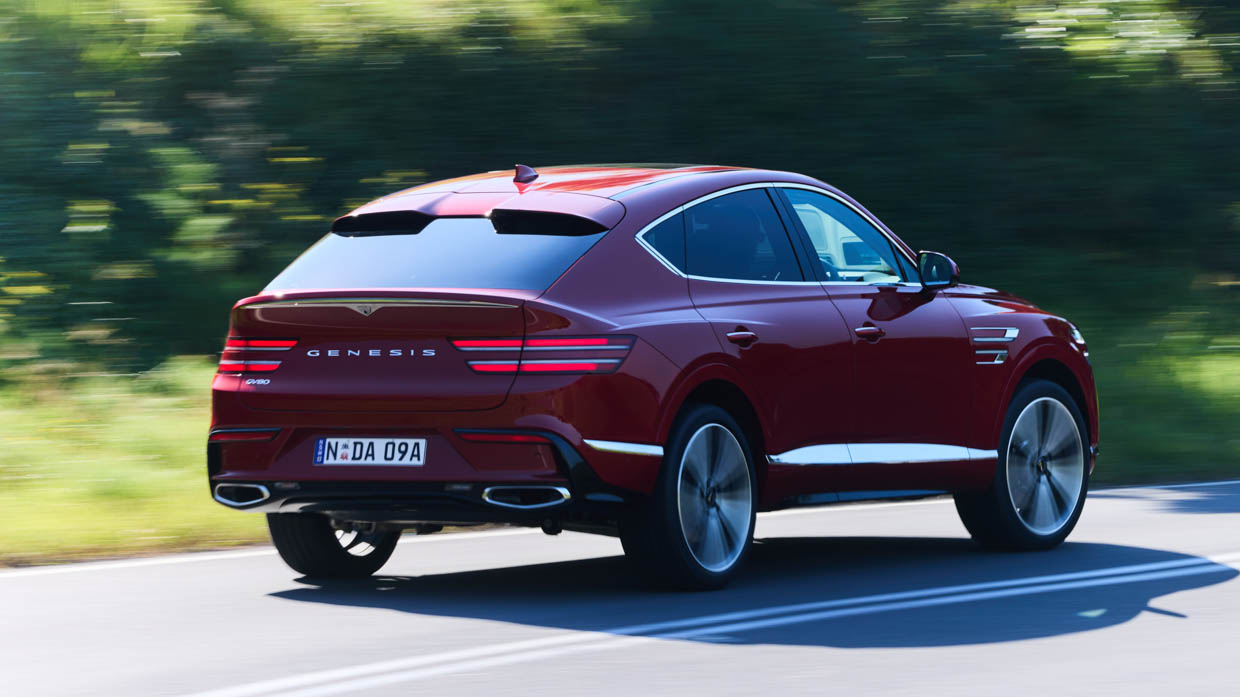
Fast forward four years to the newly launched 2025 GV80 and, boy, there’s been a shake-up. And headlining the model’s significant pivot in positioning and lineup is a new entry price of $130,000 before on-roads.
Where old GV80 took the scattergun to the market to lure new buyers, evidence suggests that the vastly more consolidated 2025 lineup makes an about-face and specifically targets the (short) track record of existing buyer trends.
Prior, there was a diverse choice of three engines, and selectively in rear or all-wheel drive. Now, Genesis Australia has decided to continue with the most popular of the trio, the 3.5-litre twin-turbo petrol V6 while ditching the least popular: the entry 2.5-litre turbo petrol four.
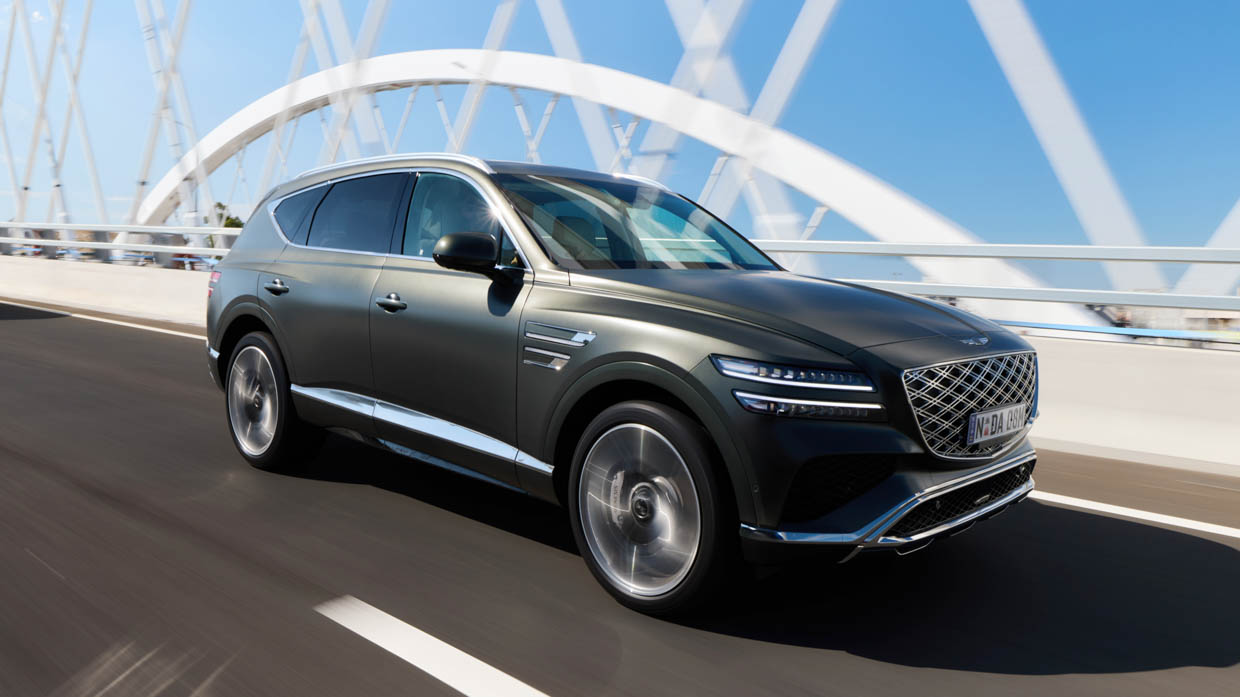
The critically best of the trio, the wonderful 3.0-litre straight six diesel, was snapped up by around 30 percent of Aussie GV80 buyers. Now that’s gone. Incredulously, it debuted and existed in GV80 for just four years before pressures of global emissions legislation put it to pasture.
It’s now petrol V6 AWD or nothing, once a $108,600 proposition, though Genesis Australia claim a whopping 95 percent of buyers ticked the Luxury Pack option on all prior GV80s sold, which could add as much as $10,000 to the bottom line. This pack is now standard on all GV80s for what is now a single, high-grade, no-name variant.
All of this considered, there’s certainly credence to Genesis Australia’s claim that, in like-for-like specification, old versus new examples are around eight percent pricier now in facelifted form.

So GV80 personalisation isn’t what it used to be – or, perhaps more correctly, isn’t where it used to be…
The sole trim level now spawns two body styles in the conventional wagon and the newly introduced Coupe. The former brings a choice of seating configuration in the classic three-row seven-seater and a six-pew format with dual row-two buckets and hefty central console, for a three-grand upcharge ($133,000 list).
The Coupe, for its part, is strictly a two-row, five seat arrangement, itself a further three grand up the fiscal outlay tree ($136,000).
Chasing Cars got to sample all three variants at the recent Australian launch, each loading in high-grade luxo-pack-augmented standard equipment with new features debuting on the facelifted lineup…plus, a smattering of the few options now available on the GV80 menu.

Clearly the revamped, want-for-nothing specification bundled into Genesis’s ‘exclusive’ ownership experience underpins the model now bullishly pushing further upmarket.
Whether you opt for the seven-seater ($130,000), the six-seater ($133,000) or five-seat Coupe ($136,000) the core powertrain and features are the same. It’s an exhaustive list and one that we’re compelled to abridge below lest it run longer than War and Peace…
The Coupe, though, features unique design highlights throughout, from the wheel style to the tiller, and from the interior trim garnish to colour scheme choices.
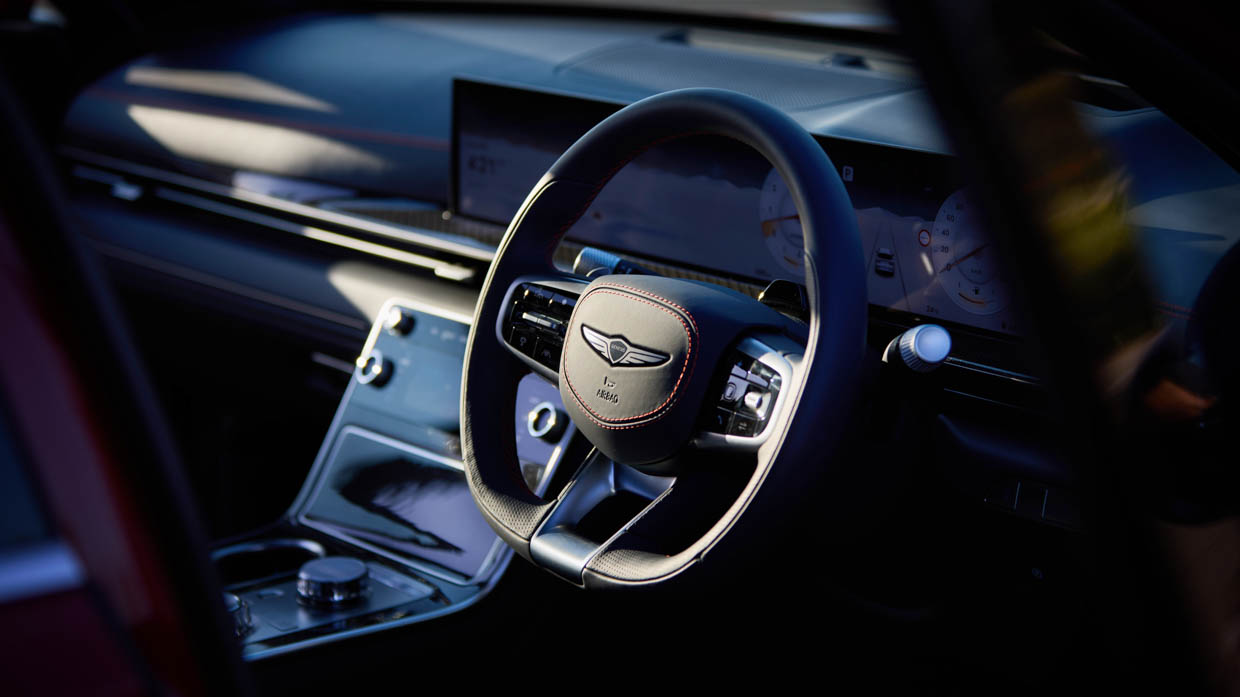
Standard features include:
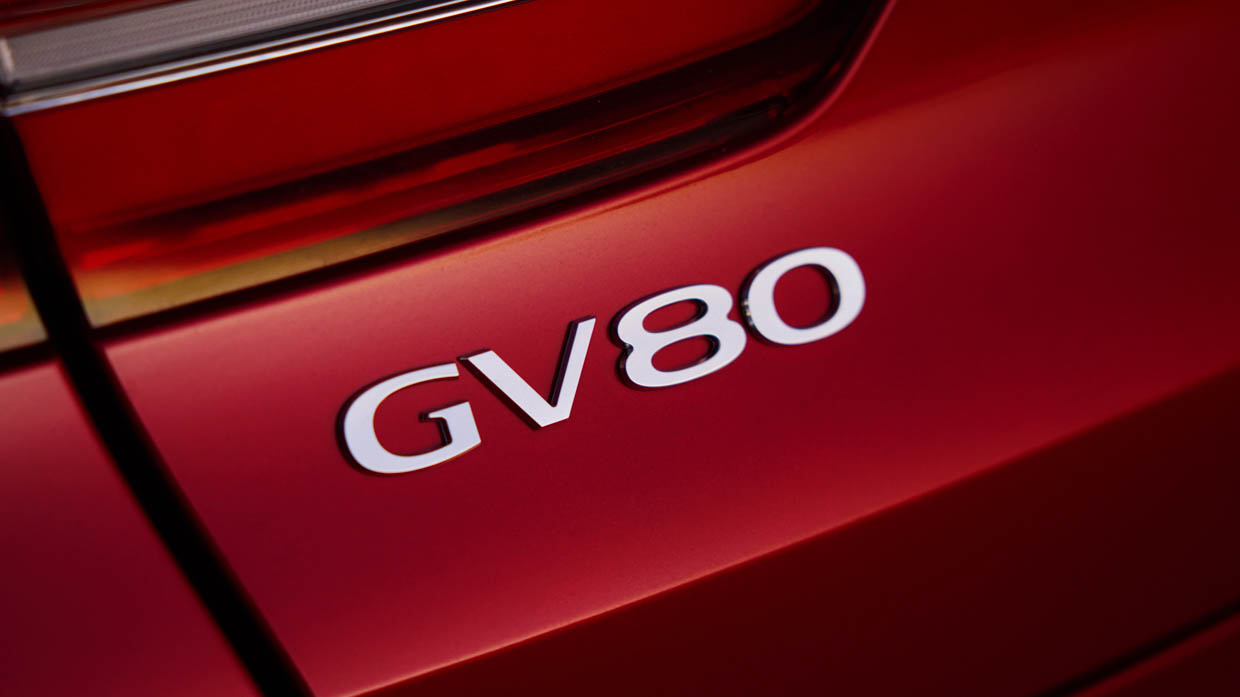
There are 11 different exterior paint finishes (three of them matte) and 11 different interior colour schemes available, with a selection of five different trim garnishes depending on variant and configuration.
The GV80 on really has two cost options: matte effect paintwork ($2000) and a rear entertainment upgrade ($4800) featuring 14.6-inch multimedia display screens.
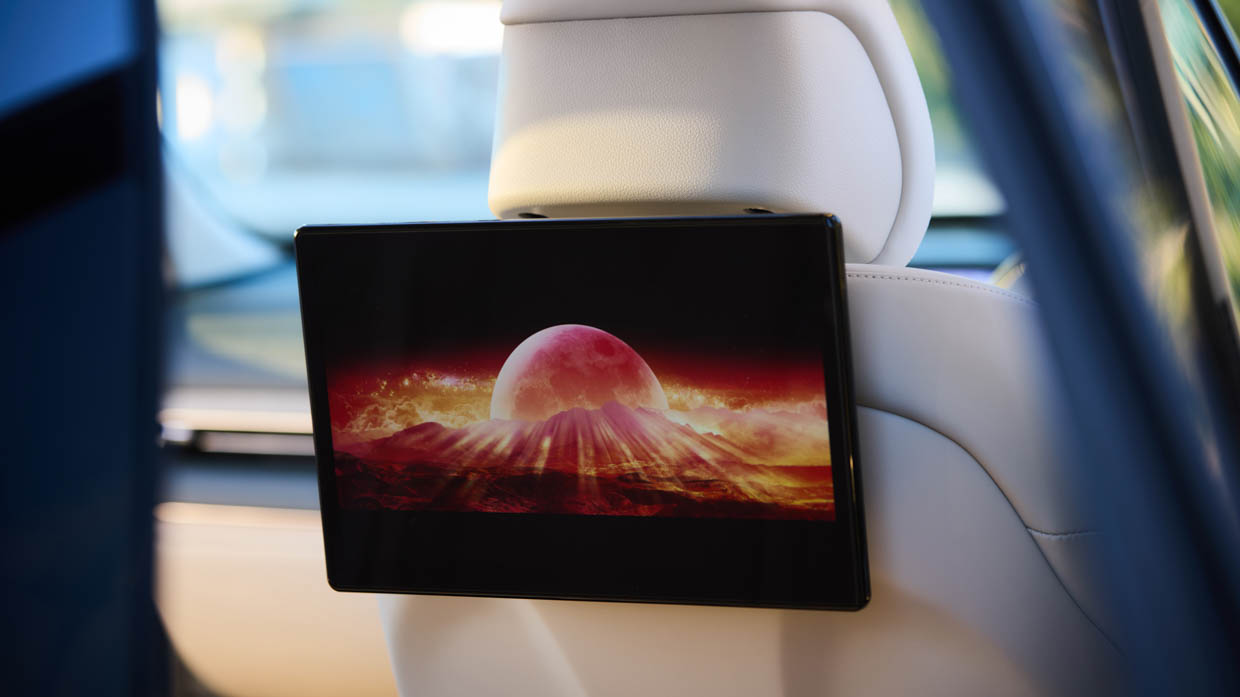
What was three is now one, and the 3.5-litre twin-turbocharged petrol V6 makes a popular return in the same 279kW and 530Nm guise offered prior. So there’s not much news under the bonnet – nor perhaps should there be given the trio of engines launched in GV80 were all brand-spankers four years ago.
There is a 48-volt-powered electrically supercharged V6 that’s crept onto the global GV80 menu of late, one packing 305kW and 549Nm according to sources. Stonewalling that inclusion to the Aussie lineup, the local importer says, is that the format isn’t feasible for right-hook application.
Whether a fancier, fruitier petrol V6 will be missed is debatable given how good the familiar unit already is and how well integrated it is with the eight-speed torque-converter automatic and the on-demand all-wheel drive.

The big-displacement six strides off the line, buttery smooth and without much evident sweat. There’s a nice faint whirl under load and ample shove in the torquey undertow that does a fine job of hauling the GV80’s 2.2-plus-tonne masses (from 2225kg for the wagon, 20kg less for the Coupe).
Performance wise, it’s claimed the wagon will hit 100km/h from a standstill in 5.6 seconds, which isn’t hanging about. Just why the slightly more lightweight Coupe is one-tenth slower on the form guide (5.7sec) is a bit of a head-scratcher.
Of course, there’s no electrified assistance – and one in sight for the GV80 lineup period – and the six rings as a traditionalist unit for traditionalists tastes. It’s a good fit for owners wanting to tour in refined comfort, who like to town with moderation – GV80 is 2700kg braked – and for those who don’t object to digging deep for fuel.

That’s because in either body style it’s a bit of a thirsty bugger. On the open road it’s decent enough, where it dips into a high eight litres per hundred. Combined is 11.7L, while the urban claim is a sobering 16.2L. We’ll need to get them through the Chasing Cars garage for a genuine real-world assessment.
It does fit a large 80-litre tank, so theoretical peak range is decent, and it runs a 95-octane minimum, which isn’t too hard to source during grander touring. But what might dissuade you from tackling more ambitious trips with loved ones aboard is the lack of a spare wheel for those whopping 265mm 22-inch hoops.
The old GV80’s leisurely and genial on-road manner continues in facelift form without deviation. There’s nothing sporting about the breed and nothing sportier in revision here. Same goes for the Coupe.
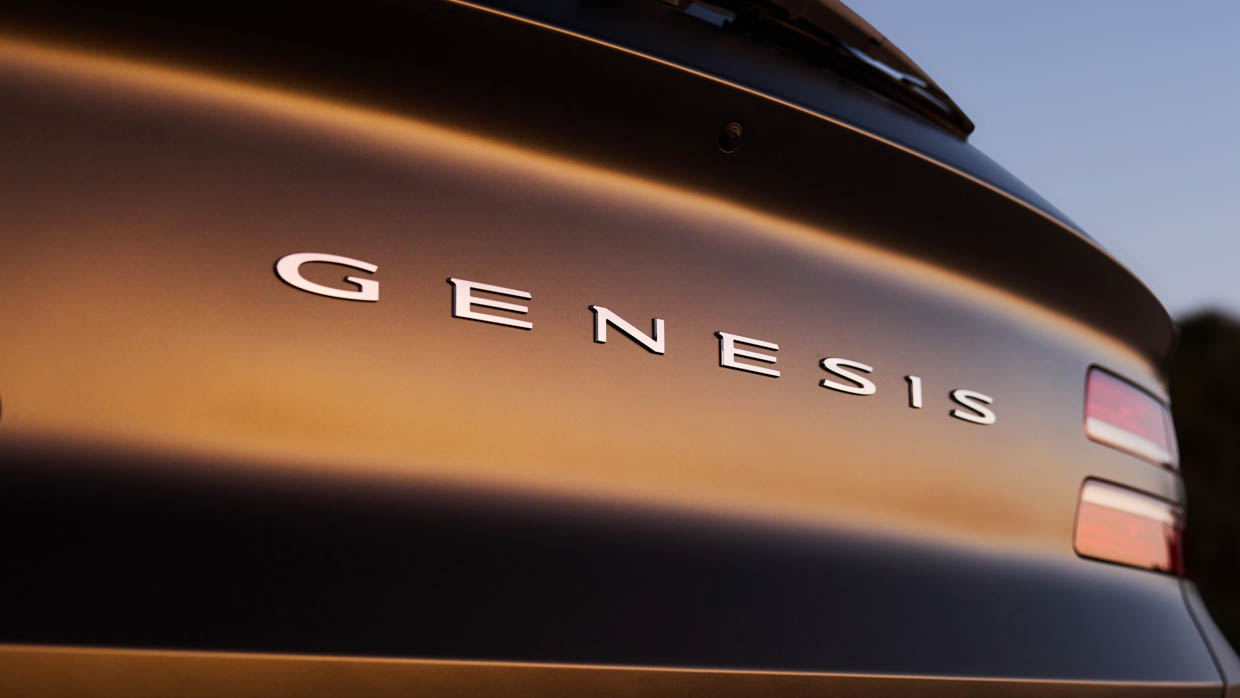
If you’re expecting a spicier experience to match the sloped-back’s sportier trinkets – spoiler, flat-bottom wheel, carbon-fibre frivolity – you will be disappointed.
The Coupe’s version of the Road Preview electronic control suspension, that uses a forward camera to read the road ahead and adjust the damping to suit, is said to be a slightly different fundamental tune. That it might seem a touch more settled could partly be a placebo effect of the form factor, because any way you have GV80 it is, like the old lineup, a real softy.
The floaty, pillowy ride quality of the old remains in the new, the Road Preview smarts in the wagon seemingly portly directly over: a ‘global tune with Aussie input’, Genesis Australia says. For teel sprung suspension, it’s amazingly compliant.
Two-up, the wagon’s soft-edged manner, there’s just enough discipline in the body control for many tastes. But four-up with luggage, the tail end starts to bob around like the Manly ferry in a storm, lolling about on lumpy blacktop with a distinct lack of rebound control in the rear.
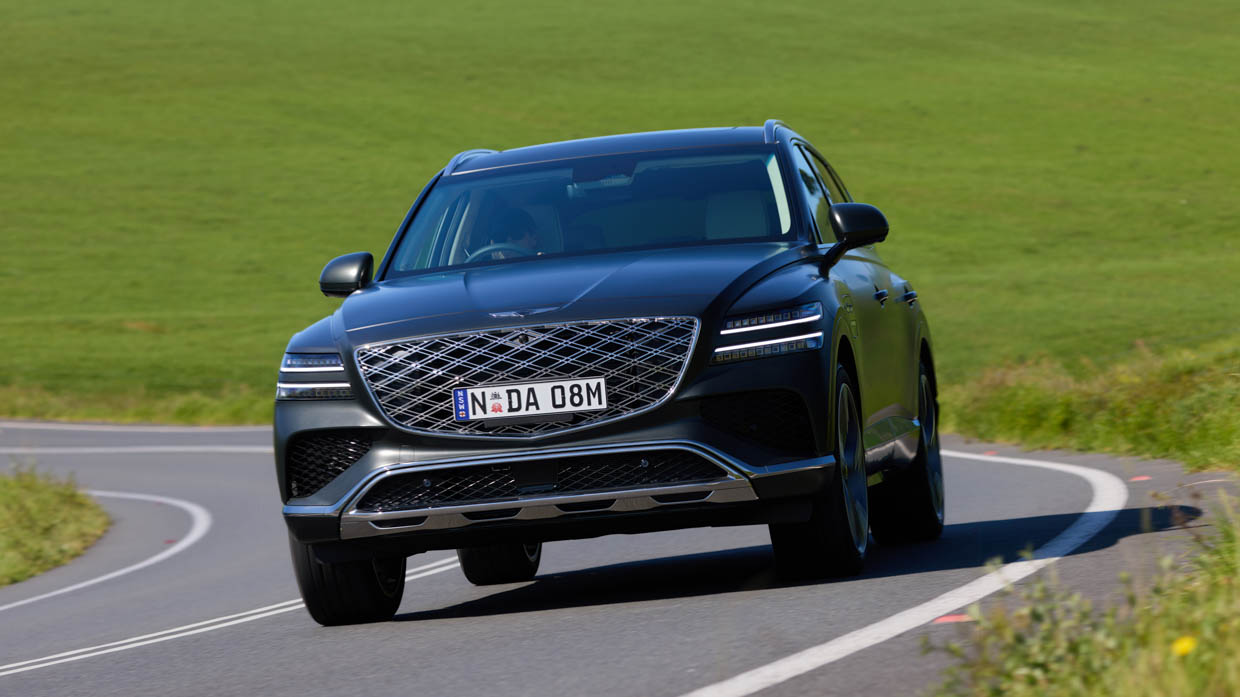
It’s only when you start digging about in the suspension options and pluck the Sport+ setting when the chassis final becomes settled enough to not make you seasick. And it’s only the Coupe that fits this ‘firm’ setting option…
Between the polite powertrain, the soft ride, the bank vault-like solidity and smarts such as the active sound cancelling, you really have a recipe for serene and tranquil luxury touring or commuting. And then the In Cabin Camera (ICC), or driver attention system, goes and ruins everything.
Out on the open road, the ICC will regularly chime in to advise you annoyingly and frequently to pay attention to the road or stop and take a break while you conduct normal driver behaviour. Slow to urban speeds around town and it just gets more reprehensive.
Try to use the flashy new 27-inch OLED display screen – more below – and you’ll be reprimanded. Adjust the HVAC controls and you’ll be reprimanded. Divert your gaze to the in-screen augmented reality display, that provides navigation advice via a forward-view camera overlay, and you’ll get reprimanded.

Short term, it’s annoying,. Longer term, it’s infuriating to the point of being a genuine deal-breaker.
So, like the stupid Hyundai/Kia family overspeed warning system that rearms on start-up (as also fitted in GV80), you need to dig around to turn two separate systems off. Each is buried in different layers of separate submenus. This is hugely inconvenient, but it doesn’t stop there…
Even when switched off, the ICC rearms itself seemingly randomly. Result? You have to try switching it off while driving in order to troubleshoot why it won’t remain disarmed which, oh-so ironically, is about as distracting from the whole driving experience as things could possibly get.
This system is fast becoming a trend in modern cars, especially Korean and Chinese cars, but that doesn’t mean the GV80 gets a free pass from criticism. It’s poorly calibrated for real-world conditions, is hugely distracting, is not legally required and should be chucked in the bin.
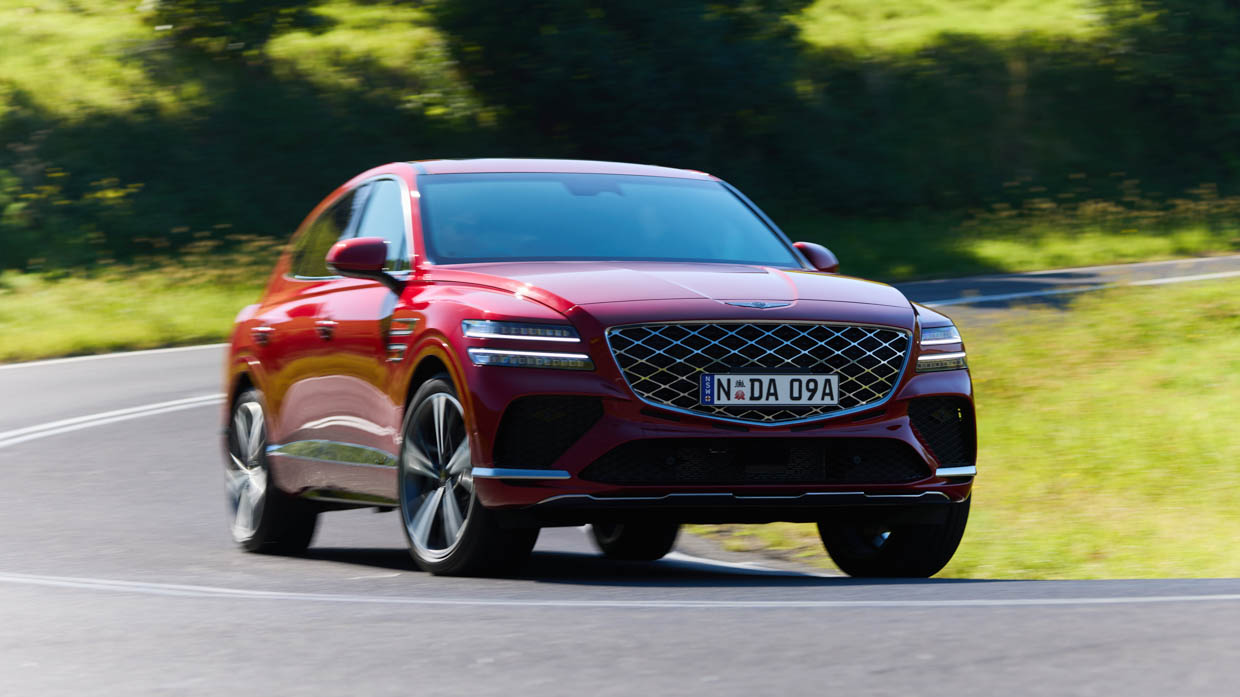
Don’t get me wrong. Well-sorted active safety and collision prevention are essential modern allies. But a system that criticises your driving style and reprimands the driver for actions it doesn’t like is nannying. These are entirely and utterly different concepts.
To almost sabotage its own stance on this manner, the new Highway Driving Assist 2 with lane Keeping Assist 2, which allegedly allows automated lane changing at the flick of an indicator stalk, refuses to change lanes when it’s clearly safe to do so. And, thus, proves the driver is smarter than the vehicle.
It then backs this up by relinquishing self steering during semi-autonomous cruise control – as all cars do – in the clear admission that the driver is in fact the master of on-road ceremonies. You can’t have it both ways.
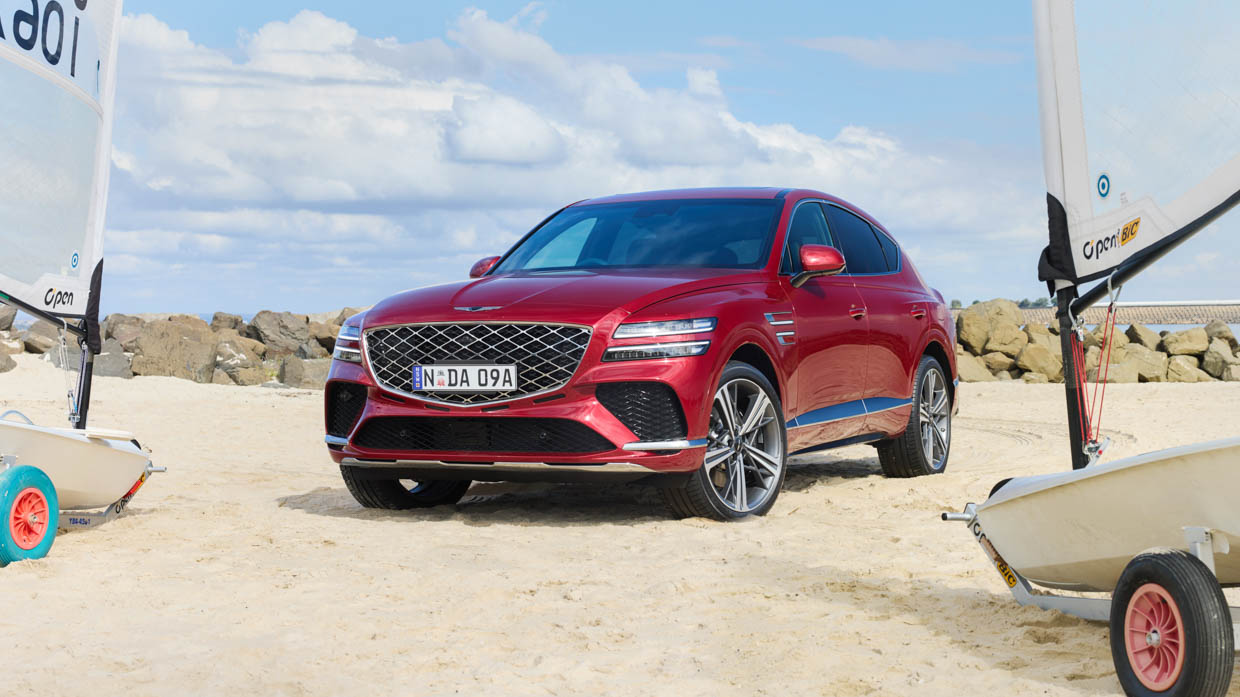
The first-gen GV80 was a knockout for cabin opulence and elegance, and that theme continues unabated in the new version that’s been remodelled across the dash fascia yet maintains the very same high-class, feel-good vibe.
Pride of place in the GV80 is the new whopping 27-inch OLED display that floats across a continuous and more uniform dash contour, door to door. Yes, it’s one piece, not like the cut and shut job of smaller component screens sewn together as seen in some German rivals.
Gone is the polarising two-spoke wheel, now replaced by a fetching and more conventional three-spoke wheel that’s round in the wagon and has a flatter-bottom shape in the Coupe.
The button array on the wheel is straightforward, the console dials for the transmission and drive mode selection are sparse and streamlined along the centre console, and the whole cabin presents a cleanliness and simplicity that is increasingly rare in the luxury SUV segment.
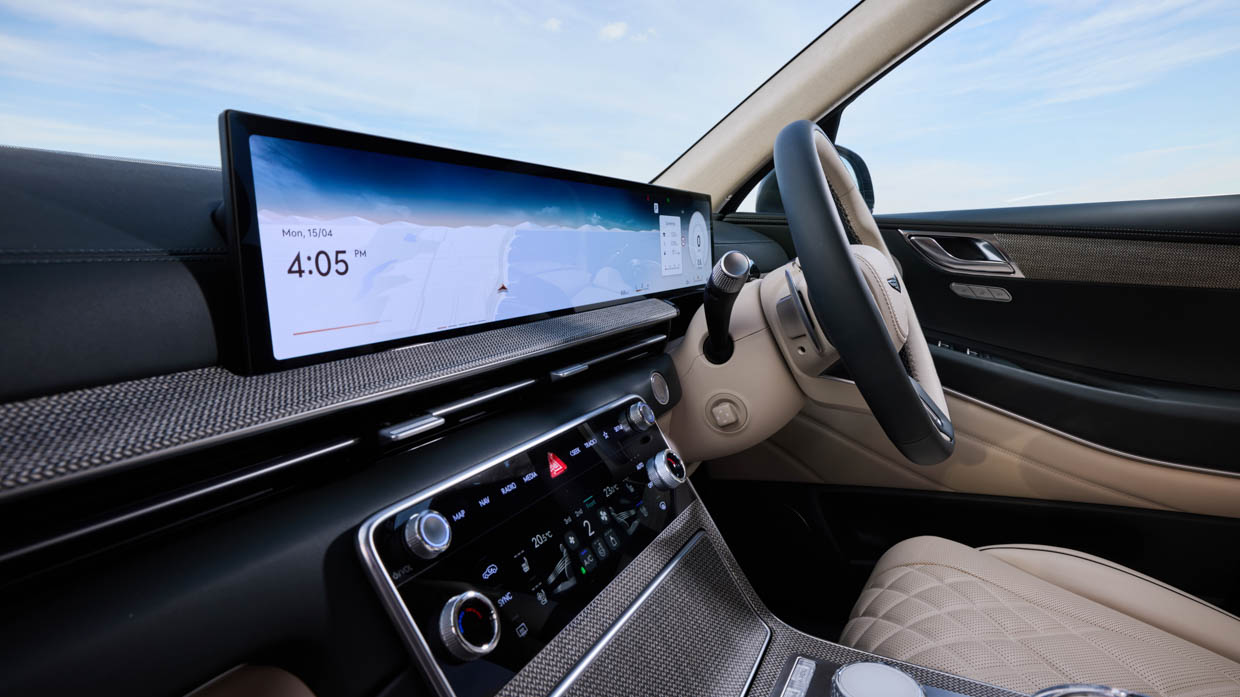
It does make for a classy and deftly styled alternative to the often overwrought and techno-fetishist German competition.
The Genesis is also conspicuously upmarket in opulence, material choice and integration – it feels a few rungs richer than a Lexus RX, as it should be given the median GV80 price is now considerably higher than its Japanese nemesis.
Every surface feels tactile and the whole shebang has a real solidity about it, with Genesis trimming away some of the (very few) shortcomings of the first GV80 batch, such as some of the HVAC control. The new 6.0-inch touch-based haptic panel to adjust climate control – three or four zones depending on seating rows aboard – is one the most user friendly in the biz.
Genesis designers went to great lengths to build an upmarket facade and from the lovely soft trimmed door cars to the (Coupe’s) unique carbon-fibre weave – that almost appears like clear coated velvet – there’s virtually nothing that appears cost conscious or downmarket.
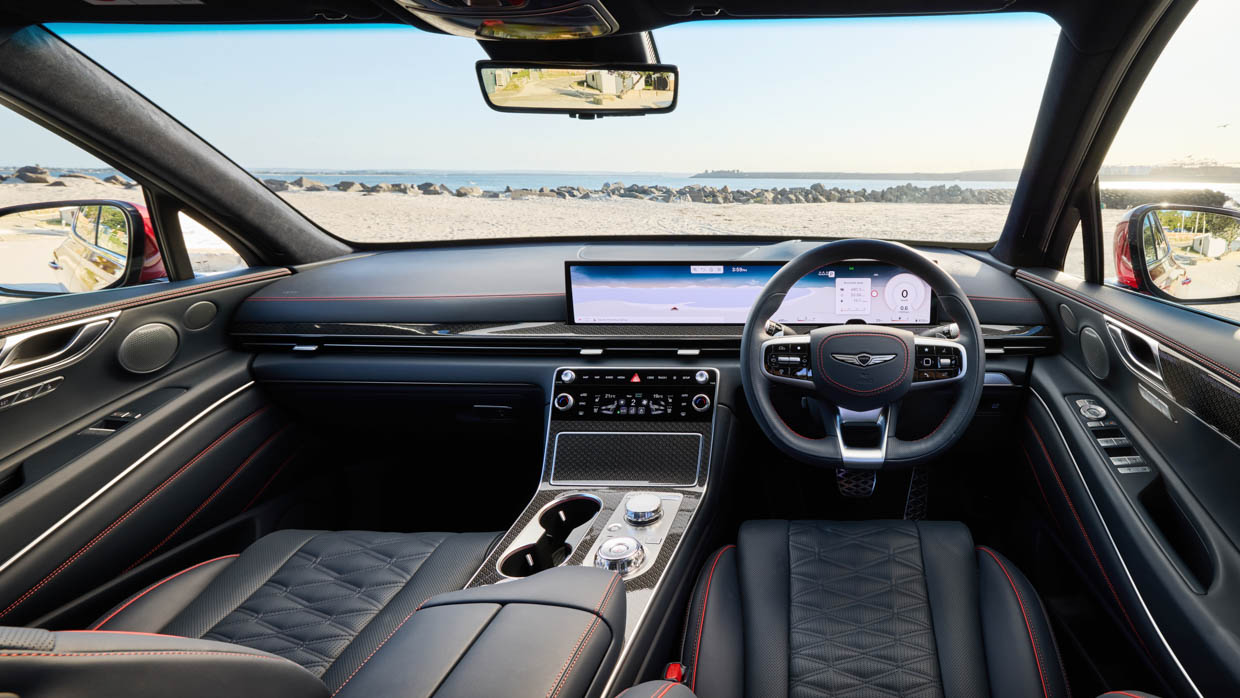
The all-singing, all-dancing front pews are 18-way adjustable, heated and ventilated, and offer massage functionality that’s nice (and surly) when you want it. However, that they automatically activate after an hour on the road is both surprising and distracting as you fumble around to try and switch them off when you’re not up for the back poking.
The seat could be more form-fitting: their inherently lumpy nature means a lot of fiddling about to arrive at the ideally comfortable and supportive setting. First world problems…
It’s debatable whether the digital rear-view mirror – switchable to analogue – or the heated armrest or the novel UV-C sterilisation cubby in the console, presumably to kill germs on your phone, are essential fitments. But then again, such trinkets could go some way in bringing added justification for the GV80’s newly lofty price point.
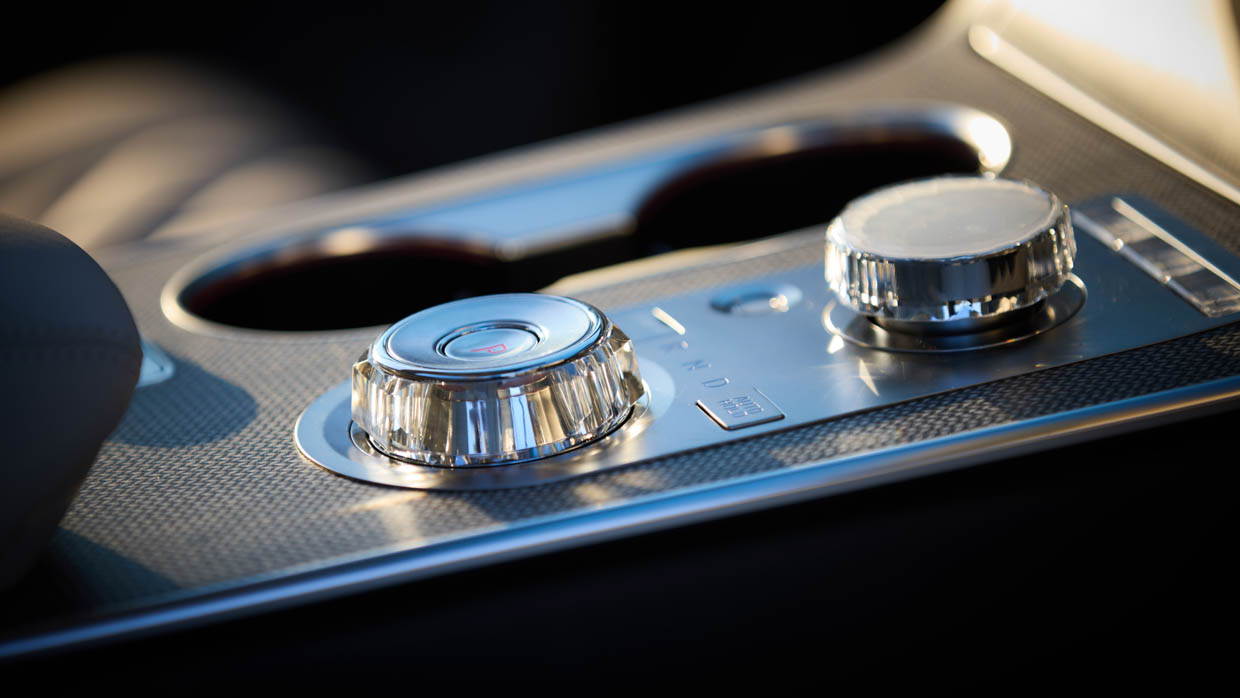
Of the wagons, the six-seater – with its two fully electric buckets – has the more indulgent vibe. The seats themselves are very comfy and have wing-style headrests, bringing a more luxurious and personalised experience to the rear passengers. The large centre console, too, offers lounging comfort for your arms and shows a handy rear inductive phone charging pad.
By comparison, the bench type second row of the seven-seat wagon or five-seat Coupe is shapely and reasonably comfortable, if more utilitarian by the nature of convention. Where the wagon features manual slide, the Coupe is all electric in a novel 60:40-split seating design.
The high-quality of execution of row one continues through to row two, which gets dedicated HVAC controls , dual USB-C ports and a 12-volt outlet in every available variant.

Room, though, is mostly adequate if not remarkable, with generous knee room (seat slid rearward) and reasonable headroom, though toe room is scant and the cabin makes three abreast rather cosy.
Not real changes to third-row packaging, with scant headroom due to the sloping roofline and cosy confines making for a space suitable only for smaller kids. Meanwhile, boot space is 735L for the wagons set as five-seaters versus 644L for the Coupe, the latter with less usable space than what the litrage figure suggests, thanks to the high boot floor and low-slung solid parcel shelf.
Much like the rest of the lineup’s specifications list, the GV80’s safety features are extensive.
All variants fit the following items that include:
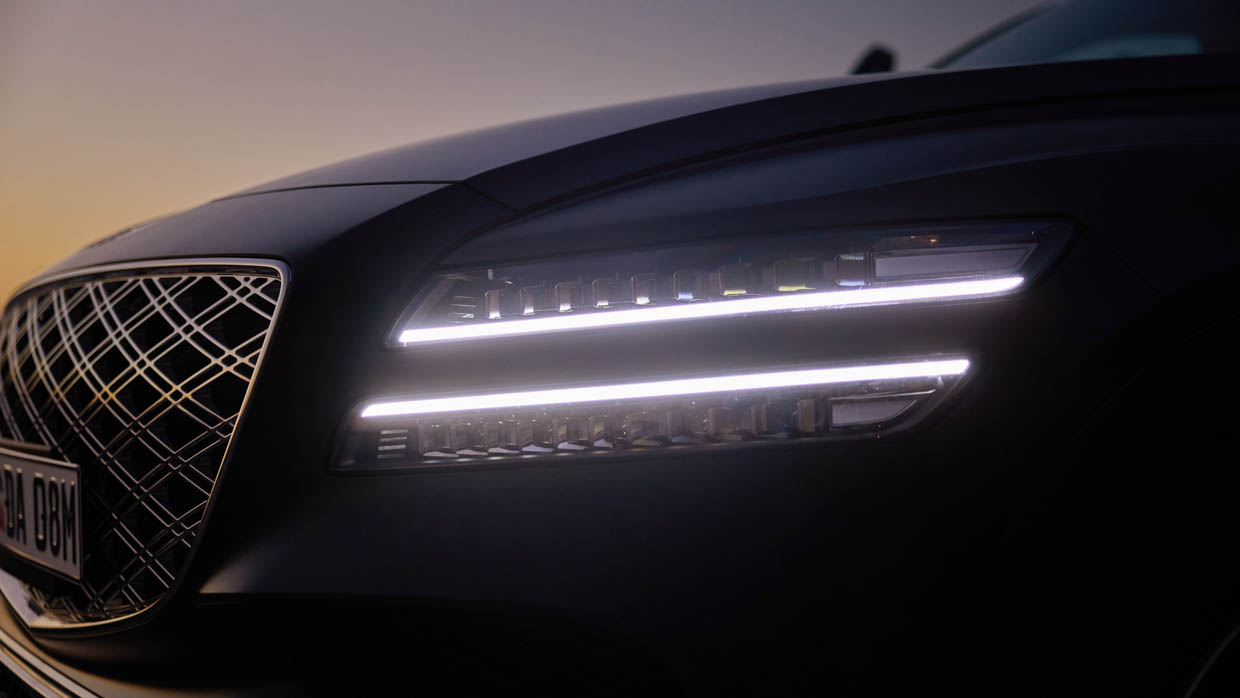
The GV80 was assessed by ANCAP in 2021 where it was awarded five stars. However, the rating only applies to the outgoing 2.5T and 3.0L diesel versions. The 3.5T versions old and new do not qualify for this ANCAP rating.
While the lion’s share of the safety systems seemed to function transparently and as expected during our test with the GV80, your reviewer has strong reservations about the calibrations of some systems fitted that are marketed as safety assistance such as the ICC.
The GV80 comes with five years of unlimited-kilometre warranty.
In with the purchase price is complimentary servicing for five years, with intervals of every 12 months and 10,000kms, whichever comes first.

“There is no doubt that it is a big ask to drop six figures on a brand that is finding its feet in the market,” is what we wrote about the GV80 with its initial arrival in late 2020. It’s fair to say that the brand is still looking and buyers are now asked to drop a fair more.
Genesis cast a fairly wide net with the GV80’s debut, back when everything about the luxury SUV was fresh and vibrant, even down to the design language.
This mid-2024 consolidation (for what coined as a 2025 model) is, beyond anything, an interesting about-face. Despite the new Coupe body style and fancy new 27-inch digital eye candy in the cabin, the lineup appears quite formulaic and conservative. It appears to strategically target the buyer tastes now established by a relatively small sample set of existing buyers that dates back just a handful of years.
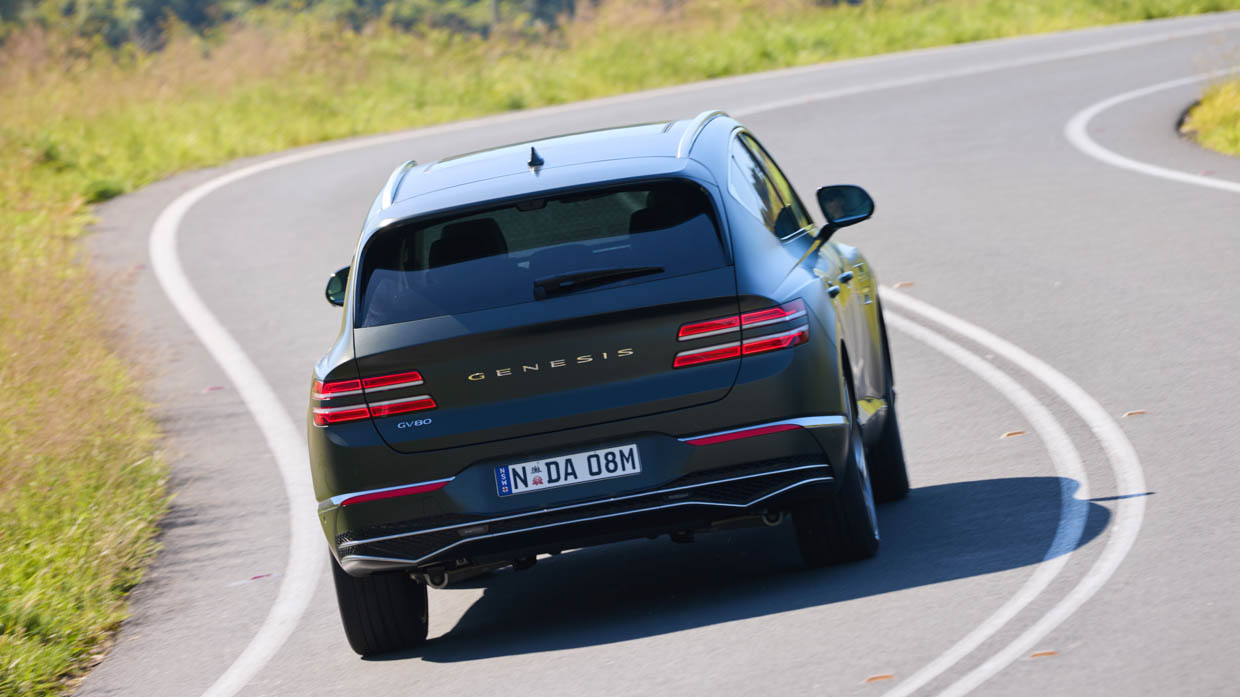
Perhaps this is a sign that the time for testing waters for Genesis in Australia is running a little dry. Perhaps the one powertrain/one trim level formula is better, safer business plan and more conducive to ‘shifting units’, at least under the ‘build to order’ ethos the brand spruiks locally.
Whatever the case, this really is a familiar model with a familiar powertrain and driving experience in true facelifted form, if one lobbed at a higher price point and loaded with kit that goes some way in justifying the hike.
The result is a very appealing rig, if one that’s a lot tougher to get excited about than it was just three and half years ago. In most respects, the new wagon isn’t much different to the old, and the Coupe isn’t that much of a departure from either.

Then there are the driver distractions. Fundamentally, the GV80 breed is hugely appealing and has a lot going for it, particularly as a vibrant and classy alternative to the usual German suspects. But the on-road annoyances are nigh on deal breakers.
Hopefully the GV80 is a couple of lines of code and an over-the-air update away from fixing these foibles.
Our very strong advice is do not sign the dotted line until you’ve test driven the GV80 both around town and on the open road, to fully discern whether it objects so vocally to your driving style as it does to mine.
About Chasing cars
Chasing Cars reviews are 100% independent.
Because we are powered by Budget Direct Insurance, we don’t receive advertising or sales revenue from car manufacturers.
We’re truly independent – giving you Australia’s best car reviews.
The estimate provided does not take into account your personal circumstances but is intended to give a general indication of the cost of insurance, in order to obtain a complete quote, please visit www.budgetdirect.com.au. Estimate includes 15%^ online discount.
^Conditions Apply
Budget Direct Insurance arranged by Auto & General Services Pty Ltd ACN 003 617 909(AGS) AFSL 241 411, for and on behalf of the insurer, Auto & General Insurance Company Limited(ABN 42 111 586 353, AFSL 285 571).Because we don’t know your financial needs, we can’t advise you if this insurance will suit you. You should consider your needs and the Product Disclosure Statement before making a decision to buy insurance. Terms and conditions apply.
Indicative quote based on assumptions including postcode , 40 year old male with no offences, licence suspensions or claims in the last 5 years, a NCD Rating 1 and no younger drivers listed. White car, driven up to 10,000kms a year, unfinanced, with no modifications, factory options and/or non-standard accessories, private use only and garaged at night.
^Online Discounts Terms & Conditions
1. Discounts apply to the premium paid for a new Budget Direct Gold Comprehensive Car Insurance, Third Party Property Only or Third Party Property, Fire & Theft Insurance policy initiated online on or after 29 March 2017. Discounts do not apply to optional Roadside Assistance.
2. Discounts do not apply to any renewal offer of insurance.
3. Discounts only apply to the insurance portion of the premium. Discounts are applied before government charges, taxes, levies and fees, including instalment processing fees (as applicable). The full extent of discounts may therefore be impacted.
4. We reserve the right to change the offer without notice.